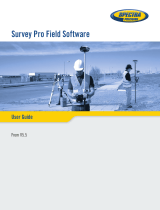
4
Contents
Recording Data and Data lines .............. 6-23
Selecting the Recording Data ..................... 6-33
Recording Data and Data Lines with
DiNi 12, 22 ....................................................6-33
Recording Data and Data Lines with
DiNi 12 T........................................................6-36
Interface ................................................... 6-38
What is an Interface? .....................................6-38
Hardware Interface of DiNi.............................6-39
Transmission Parameter and Protocols...........6-40
XON/XOFF Control.........................................6-41
Rec500 Software Dialog (Rec500-Protocol) ....6-43
Rec500 Software Dialog with
Modem Control ............................................6-44
Line Control (LN-CTL)......................................6-46
Remote Control ...................................... 6-49
DiNi Control via Serial Interface .....................6-49
Commands for Reading and Setting Instrument
Parameters on DiNi 12, 22..............................6-51
Commands for Reading and Setting Instrument
Parameters on DiNi 12 T.................................6-52
Data memory PCMCIA Card.................... 6-55
The use of PCMCIA SRAM Cards with
rechargeable batteries ...................................6-55
Compatibility of DiNi SRAM DOS Format with
PCMCIA Standard ..........................................6-56
CIS Information..............................................6-57
DOS Boot Sector ............................................6-58
DiNi PCMCIA Memory Card File......................6-58
Formatting a PC Card .....................................6-60
Adjustment the Line of Sight.................... 7-2
Calling up the Adjustment Function .................7-2
Adjustment Procedure of the Line of sight
(electronically) ..................................................7-4
Adjustment Procedure of the Line of sight
(optic) ..............................................................7-7
Adjustment of Circular Bubble ................. 7-8
Check the Function of Circular Bubble ..............7-8
Adjustment of Circular Bubble..........................7-9
7 Adjustment



























